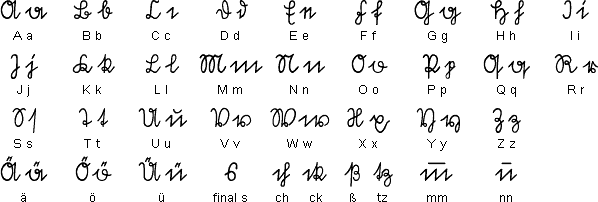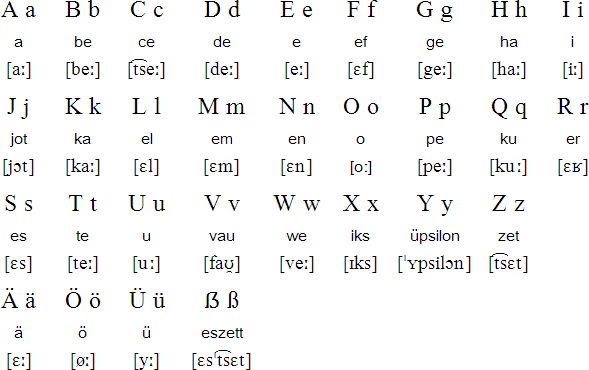German is a West Germanic language spoken mainly in Germany, Austria, Switzerland, Liechtenstein, Belgium, Luxembourg and Italy. It is recognised as a minority language in Czech Republic, Denmark, Hungary, Kazakhstan, Ukraine, Namibia, Poland, Romania, Russia, Slovakia, Slovenia, Croatia, Serbia, South Africa, Vatican City and Venezuela. There are also significant German-speaking communities in the USA, Canada, Brazil, Argentina, Mexico, Australia, South Africa, Chile, Paraguay, New Zealand and Peru.
Number of speakers
Standard German (Hochdeutsch) has around 90 million native speakers, and other varieties of German have some 30 million. There are about 80 million people who speak German as a second language, and many others study it as a foreign language.
Written German
The earliest known examples of written German date from the 8th century AD and consist of fragments of an epic poem, the Song of Hildebrand, magical charms and German glosses in Latin manuscripts. A short Latin-German dictionary, the Abrogans, was written during the 760s.
German literature started to take off during the 12th and 13th centuries in the form of poems, epics and romances. Well-known examples include the epic Nibelungenlied (the Song of the Nibelungs) and Gottfried von Straßburg's Tristan. The language used is now known as mittelhochdeutsche Dichtersprache (Middle High German poetic language). During this period Latin was gradually replaced by German as the language of official documents.
Varieties of German used in writing
High German (Hochdeutsch)
High German began to emerge as the standard literary language during the 16th century. Martin Luther's translation of the Bible, which he completed in 1534, marks the beginning of this process. The language he used, based partly on spoken German, became the model for written German.
Swiss German (Schweizerdeutsch or Schwyzerdütsch)
A variety of German spoken by about 4 million people in Switzerland, occasionally appears in writing in novels, newspapers, personal letters and diaries.
Pennsylvania Dutch/German (Deitsch / Pennsylvania Deitsch / Pennsilfaanisch Deitsch)
Pennsylvania Dutch is a variety of German spoken by about 250,000 mainly in Pennsylvania, Ohio and Indiana in the USA, and in Ontario in Canada. The Pennsylvania Dutch newspaper Hiwwe wie Driwwe publishes poetry and prose in Pennsylvania Dutch, and there are a number of other publications featuring the language. Pennsylvania German is commonly referred to as Pennsylvania Dutch, however it is not a variety of Dutch.
Regional varities of German, or Mundarten, also occasionally appear in writing; mainly in 'folk' literature and comic books such as Asterix.
Written German script styles
Sütterlin
Sütterlin was created by the Berlin graphic artist L. Sütterlin (1865-1917), who modelled it on the style of handwriting used in the old German Chancery. It was taught in German schools from 1915 to 1941 and is still used by the older generation.

Sample text in Sütterlin

Download a font for Sütterlin (TrueType, 56K)
Modern German alphabet


Nenhum comentário:
Postar um comentário